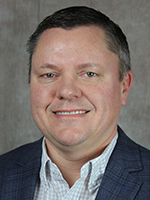
Prioritize your heat abatement options
 By Dr. David Carlson
By Dr. David CarlsonHeat stress presents many challenges for dairy farms, including diminished milk production, reduced reproductive performance and stressed cow wellbeing. Long-term impacts can be felt for years in terms of the health and productivity of offspring.
Prioritize your heat abatement options by identifying maintenance needs of existing systems as well as high-value investments that can effectively cool cows while conserving resources, such as electricity and water.
Identifying heat stress
Heat-stressed cows will seek shade, spend more time standing, consume less feed and drink more water. You can also count respiration rates on a subset of cows to determine whether they are experiencing heat stress. A cow’s normal respiration rate is 40 to 45 breaths per minute; heat-stressed cows will have respirations rates greater than 60 breaths per minute.
Shade
If barn orientation or outside feeding subjects cows to direct sunlight, consider shade cloths or structures that effectively block 90% to 100% of the ultraviolet rays over those areas.
Ventilation
We want cows to eat, drink and rest, so it makes sense to focus ventilation in the areas where cows reside. In addition, the holding pen and parlor are priorities as a cow’s body temperature tends to rise quickly in these areas.
Air velocity should be measured at the cow level (2 feet above the freestall surface) with a goal of 4 to 6 miles per hour of sustained velocity.
Maintenance of fan belts and motors is important for optimal performance and energy efficiency. Cleanliness is also critical as built-up dirt can considerably reduce fan performance. Routinely evaluate fan angle since fans can become misaligned with use. Calibrate the fan thermostat each spring to ensure the fans turn on at the proper temperature.
Water
In most facilities, fans alone are not sufficient to cool cows during the hot summer months. That brings us to water.
Cows consume about half of their daily water intake in the hours immediately following milking and feeding, so ensuring adequate access at these times is advised. One option to expand water access is to have water available as cows return to their housing following milking in addition to waterers in the pens. This can be done economically with PVC pipe, hose and a float. Aim to provide 2 feet of linear water space for each cow exiting the parlor at one time.
The holding pen is the priority for promoting evaporative cooling with air velocity and soakers. Soaking should be intermittent and activated at 65 to 68 degrees F with a one- to two-minute shower time. Start with a 10-minute interval that shortens as temperatures climb.
Feed line soakers should be set so each nozzle will deliver approximately 1 gallon of water during each shower cycle and achieve four shower cycles per hour. Mount soaker lines 64 to 66 inches above the cow platform and to a solid surface to reduce sagging and inconsistent water pressure. To conserve water, replace leaking nozzles and manage control box settings. Soaker modules can sense a cow’s presence and only operate when cows are at the feed line. Consult with a trusted plumber or electrician about ways to inactivate the soaker system when cows are not present.
Fly control
Flies can cause cows to stand more and bunch together. A combination of fly control and adequate air velocity can go a long way in reducing fly pressure.
Make your list
Spend some time evaluating your existing facilities, fans and soakers to ensure they operate at peak performance. Then consider opportunities to invest in other heat abatement tools to further cool cows and/or conserve resources. Your cows will appreciate it and so will your bottom line.
About the author: Dr. David Carlson is a Vita Plus dairy nutritionist and technical services specialist. He was raised on a small dairy farm in North Dakota and attended North Dakota State University (NDSU) to earn a bachelor’s degree in animal sciences and a master’s degree in ruminant nutrition. He received his Ph.D. in dairy nutrition from the University of Illinois at Urbana-Champaign, where his research focused on transition dairy cow nutrition. He was postdoctoral research fellow at NDSU before working with a milk replacer manufacturer and an animal health company. At Vita Plus, Carlson provides technical support for field staff, dealers, and customers in southern Wisconsin, northern Illinois, and eastern Iowa. He also leads Vita Plus dairy nutrition and management training initiatives.
This article was written for the May 2022 issue of Hoard’s Dairyman.
| Category: |
Animal health Business and economics Dairy Performance Equipment Facility design Fly control |

